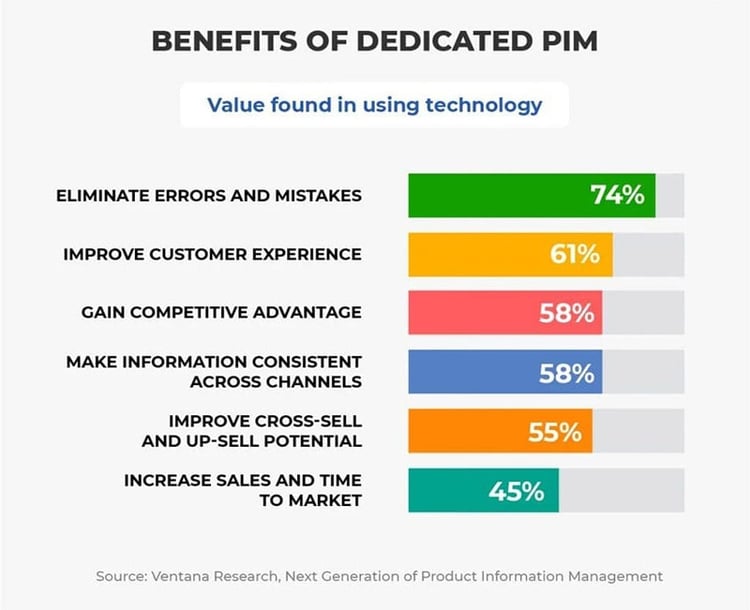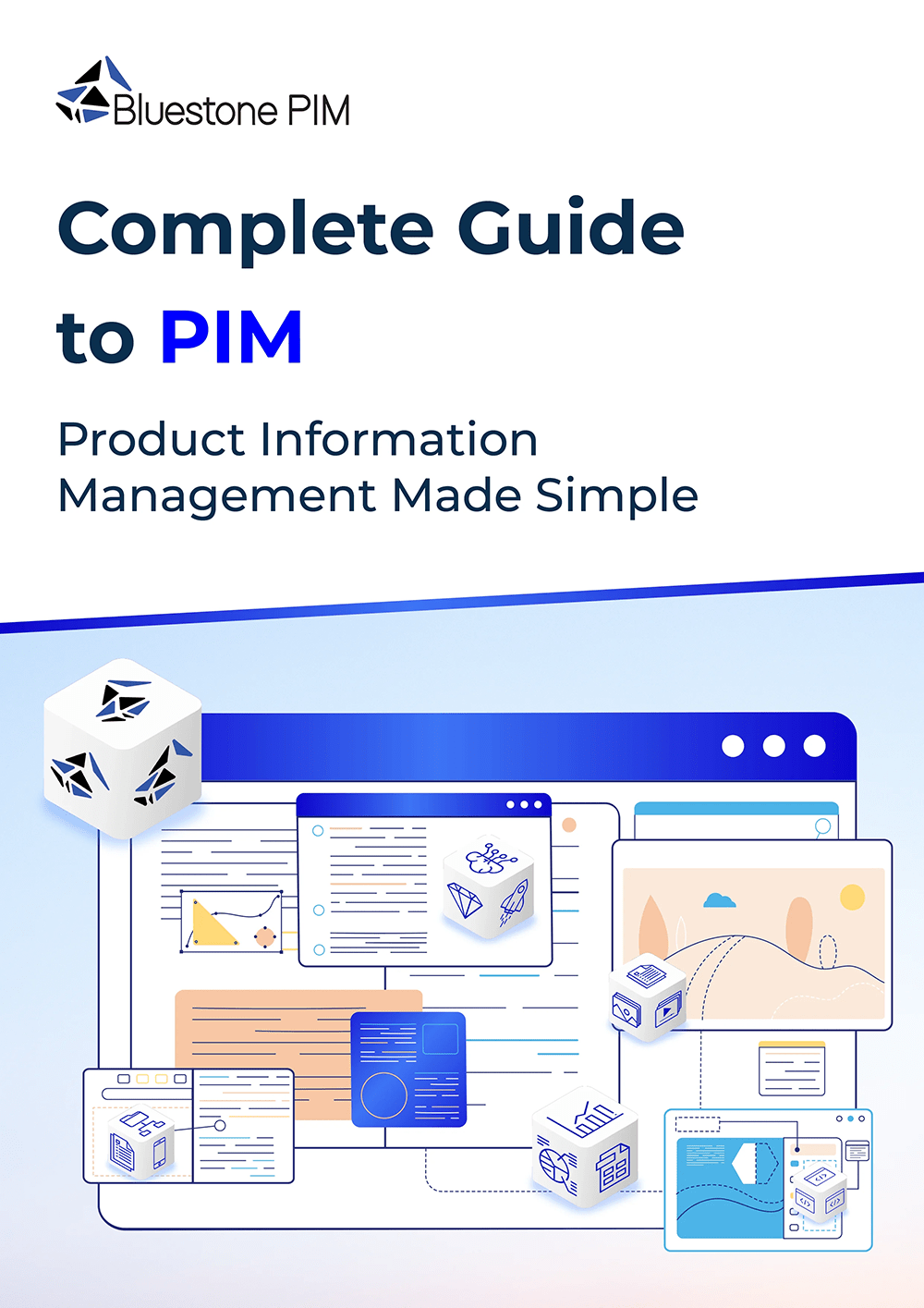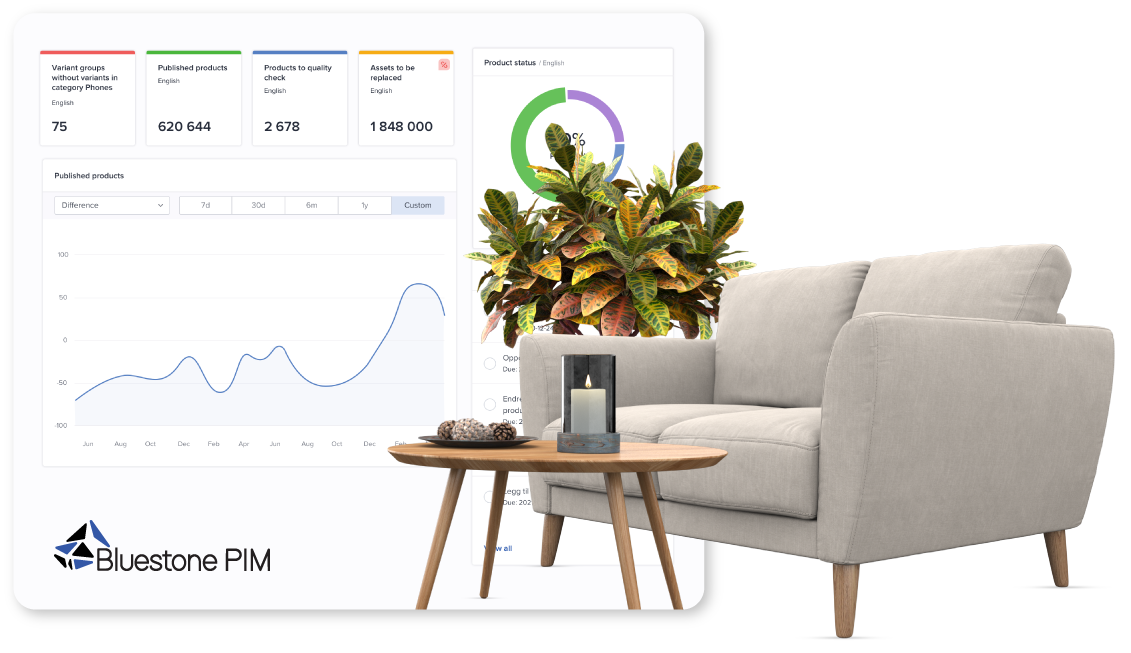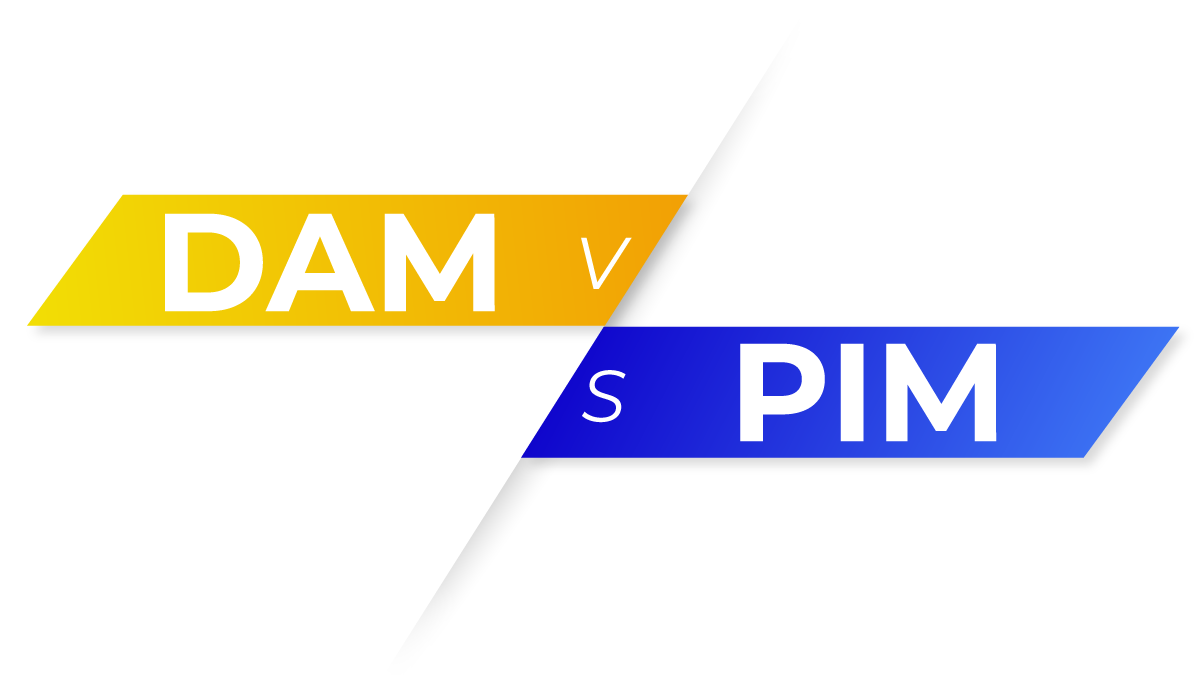PIM for Construction: 9 Ways to Boost Accuracy and Efficiency

Table of Contents
- Digital transformation — key industry challenges
- Digital Product Passport in construction
- Product information management in the construction industry
- Why do distributors and manufacturers need a PIM solution?
- How can PIM help future-proof a construction company? [9 benefits]
- Case study: How Saint-Gobain Distribution Norway leverages the PIM platform
- Summary
- FAQ
The construction industry is scaling fast, projected to hit US$13.9 trillion in global value by 2037. Yet many businesses are still held back by fragmented data, disconnected systems, and the growing complexity of product documentation and project data.
Introducing PIM for construction changes that experience entirely.
A Product Information Management platform creates a single, accurate, and scalable product data foundation for your entire organisation. It helps teams reduce errors, accelerate workflows, and deliver consistent, high-quality information wherever it’s needed from internal systems to customer-facing channels.
Quick Summary:
Construction companies are drowning in product data, documentation, and disconnected tools. A Product Information Management (PIM) platform cuts through the chaos by centralising product data, eliminating silos, and keeping every specification, material detail, and data sheet accurate and up to date.
In this article, you’ll see 9 practical ways PIM transforms daily work: from instant data enrichment and smarter collaboration to automated multichannel distribution.
If your teams struggle with:
-
inconsistent product information
-
slow manual updates
-
missing or outdated specifications
-
messy collaboration across numerous stakeholders
…then a composable PIM platform like Bluestone PIM is the foundation you need to future-proof your construction data ecosystem.
Digital Transformation — Key Industry Challenges
Construction companies operate in a complex environment with numerous stakeholders, variable project lifecycles, and heavy regulatory requirements. These characteristics often become barriers during digital transformation.
Let’s look at some typical hurdles building companies often face while adopting digital technologies:
-
Legacy systems and manual processes: outdated tools slow down digital adoption and increase the risk of human error.
-
Fragmented data and communication: multiple parties involved in each construction project produce data silos and inconsistencies.
-
Interoperability limitations: many tools used across the building process do not integrate seamlessly with ERP systems, procurement tools, or documentation platforms.
-
Complex regulatory compliance: managing certifications, documentation, and safety standards increases administrative workload.
-
High variability across projects: each construction project introduces unique materials, specifications, and product data requirements.
Addressing these pain points requires not just new software, but a central repository: a single source of truth that provides accurate, accessible data across all teams.
Digital Product Passport (DPP) in Construction — A New Compliance Factor
The construction sector will soon face additional regulatory requirements with the introduction of the Digital Product Passport (DPP) under the EU’s Circular Economy Action Plan. DPP aims to increase transparency, sustainability, and traceability across the building process.
For construction materials and components, the DPP will require structured, accurate, and accessible information such as:
-
materials composition
-
environmental and sustainability data
-
certifications and safety documentation
-
repair, reuse, and end-of-life instructions
For construction companies and manufacturers, this means that product data must be complete, verified, and consistently maintained throughout the product lifecycle.
A PIM platform provides the foundation needed to support DPP compliance by structuring product data, managing documentation centrally, and ensuring up-to-date information across all channels. Bluestone PIM’s data modelling and digital asset capabilities help companies align their product data templates with future DPP requirements.

DOWNLOAD FREE E-BOOK
Digital Product Passport Compliance: The Deadline Every Business Must Meet
DPP compliance is mandatory in the EU. Don't risk your business on guesswork. Get the only guide you need to navigate DPP regulations confidently and completely.
Product Information Management in the Construction Industry
Construction companies, especially manufacturers and distributors of building materials, handle enormous volumes of product data and documentation. Managing data sheets, product details, digital assets, and compliance information becomes increasingly complex as portfolios grow. Luckily, a Product Information Management solution can help with all of this.
Product Information Management (PIM) refers to the process of collecting, organising, enriching, and distributing product details across all marketing, sales, and operational channels. A dedicated PIM platform centralises this project information, supports data accuracy, and provides automation that reduces manual effort.
Why Do Distributors and Manufacturers Need a PIM Solution?
Construction distributors and manufacturers often extract and rework information from many sources. Each sales channel requires its own formatting, attributes, and descriptions. A PIM platform supports them by enabling:
-
centralised product data management
-
efficient content delivery
-
fast integration with other components and systems
-
increased productivity through automation
-
structured and scalable product data frameworks
Example:
Neumann, a major Norwegian B2B construction distributor, uses Bluestone PIM as the master copy for all product data, allowing them to enrich or override information coming from industry databases such as NOBB.
PIM makes it easier for construction managers and data teams to work with large volumes of product data with less effort, reducing the risk of inaccurate or incomplete information. Research with Ventana shows 74% of organisations plan to use PIM to prevent data errors and inaccuracies.

How a PIM Platform Future-Proofs a Construction Company: 9 Key Benefits
The construction sector demands tools that can keep up with its complexity. A PIM platform delivers exactly that: agile data management, powerful automation, and a single source of truth for every product detail.
Manufacturing leaders get this newsletter. You should too.
Get insights, real case studies, and actionable strategies. Join 700+ subscribers.
#1 Centralising Product Information
The State of Data Capabilities in Construction report found that construction managers and executives spend an average of 11.5 hours a week researching and analysing data. Gathering data in one central repository that acts as a single source of truth can save a lot of time.
A PIM makes it possible to centralise all relevant product information in one place, ensuring all teams have access to the latest, accurate data regardless of location. For example, a manufacturer can consolidate spec sheets, brochures, catalogues, bids and other critical documents from different regional teams in a single PIM platform.
#2 Managing High Volumes of Product Data
Building product portfolios contain vast numbers of SKUs and variants; a PIM provides the ability to easily ingest, store, and manage these at scale. A home builder offers 10,000 varieties of standard and custom home designs; a PIM allows easy management of this complex product portfolio.
#3 Product Information Enrichment
Different teams can enrich data with specifications, certifications, materials, dimensions, and more. With native AI features, you can generate descriptions, translate product details, and maintain up-to-date information across all channels.
#4 Optimising Product Information
Within PIM software, teams can take advantage of workflow tools to review, approve, and publish consistent, high-quality product content for websites, catalogues and other customer-facing materials. Marketers can ensure consistent messaging across all materials shown on the company website and third-party sites.
Watch the video to learn why ERP and PLM systems are not enough.
#5 Streamlining Collaboration
Cross-functional teams (from engineering to sales) collaborate efficiently using comments, tasks, completeness checks, and version controls.
#6 Managing Digital Assets & Documentation
A PIM becomes the single source of truth for storing, finding, and reusing product images, documents, manuals and compliance documentation. You can store all these digital assets in native DAM (Digital Assets Management) module or sync with external DAM and connect them to relevant product data in PIM.
#7 Product Information Distribution in Multiple Channels
Consistent information can be syndicated from the PIM to all sales and e-commerce sites, marketplaces, CRM systems and third-party providers. For companies that rely on multiple channels, the PIM platform can send information necessary for orders to e-commerce solutions on a website, mobile devices, or e-procurement portals.
#8 Data Syndication
In PIM, product content is automatically syndicated to downstream systems, avoiding manual re-entry and reducing human error. For example, changes to concrete types and technical data are automatically syndicated from the PIM to downstream CPQ and ERP systems.
#9 Boosting Product Experience
End customers get reliable, complete, and accurate product information, improving decision-making and reducing errors during the building process.

DOWNLOAD FREE E-BOOK
Product Information Management Made Simple
Your go-to resource for understanding, choosing, and using a PIM system to grow your business. Packed with clear explanations, real examples, and practical advice, this guide shows how to manage product data efficiently, improve consistency across channels, and speed up time-to-market.
Case Study: How Saint-Gobain Distribution Norway Leverages the PIM Platform
Now let's look at an example of how PIM works in practice.
See how Saint-Gobain Distribution Norway, a leading distributor of construction materials, timber, and interiors in Norway, uses the Bluestone PIM platform to scale their operations.
The Solution
Bluestone PIM, a true composable PIM platform built on MACH principles, became the keystone of Saint-Gobain’s data ecosystem. Its ability to connect with other components via 700+ API endpoints, scale with business needs, and support supplier collaboration made it a natural fit.
The Outcomes
Bluestone PIM unified all data layers and introduced a supplier portal, completeness scoring, and automated workflows. This enhanced collaboration, reduced errors, and created new operational efficiencies across the organisation.
To learn more about the success of our clients' businesses after implementing Bluestone PIM, visit our case study collection page.
Summary
A modern PIM platform helps construction companies centralise product data, eliminate data silos, reduce errors, and strengthen their digital foundation.
Bluestone PIM provides:
-
easy access to accurate data
-
AI-powered product enrichment
-
improved collaboration between stakeholders
-
reliable distribution across multiple channels
Companies that adopt a composable Product Information Management platform position themselves to drive growth, open new revenue streams, and improve accuracy throughout the entire project lifecycle.
Schedule a consultation, request a personalised demo, or explore a video tour to discover how Bluestone PIM becomes the cornerstone of a resilient, future-ready construction data ecosystem.
See Bluestone PIM in Action
Talk to our experts and build a data model that fits your e-commerce business today and scales for tomorrow.




